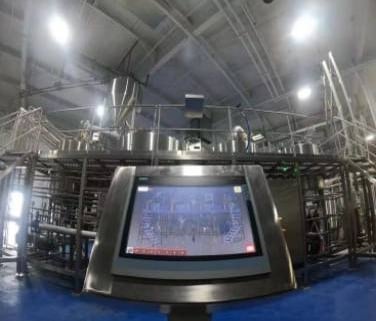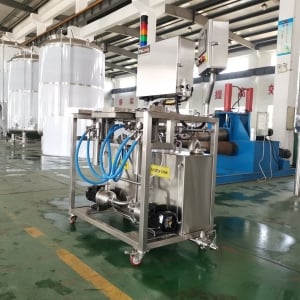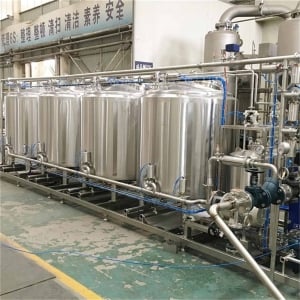Beer Machine for Home
Imagine this: You walk into your kitchen, ready to unwind after a long day. Instead of reaching for a store-bought beer, you pull a perfectly chilled, refreshing India Pale Ale (IPA) from your very own home tap. Sounds pretty good, doesn’t it? Well, with a home beer machine, this fantasy can become a reality.
In this comprehensive guide, we’ll delve into the world of home beer brewing machines, exploring everything you need to know to embark on this rewarding hobby. From understanding the different equipment options to navigating the brewing process, we’ll equip you with the knowledge to confidently choose a machine and start crafting your own delicious beers.
Types of Beer Machine for Home
There are two main categories of home beer machines: brewing systems and dispensing systems.
- Brewing Systems: These are all-in-one machines that handle the entire brewing process, from steeping the grains to fermenting and carbonating the beer. They’re perfect for beginners who want a simple and user-friendly experience.
- Dispensing Systems: These systems focus solely on tapping, chilling, and serving pre-made kegs or beer refills. They’re ideal for those who already enjoy craft beers and want a convenient way to have them on tap at home.
Here’s a table outlining the key differences between these two types of machines:
| Feature | Brewing Systems | Dispensing Systems |
|---|---|---|
| Functionality | Brews beer from scratch | Dispenses and chills pre-filled kegs or refills |
| Level of Involvement | More hands-on, requires following recipes and monitoring the brewing process | Less hands-on, requires minimal maintenance |
| Ideal for | Beginners and experienced brewers who enjoy the brewing process | Craft beer enthusiasts who want draft beer at home |
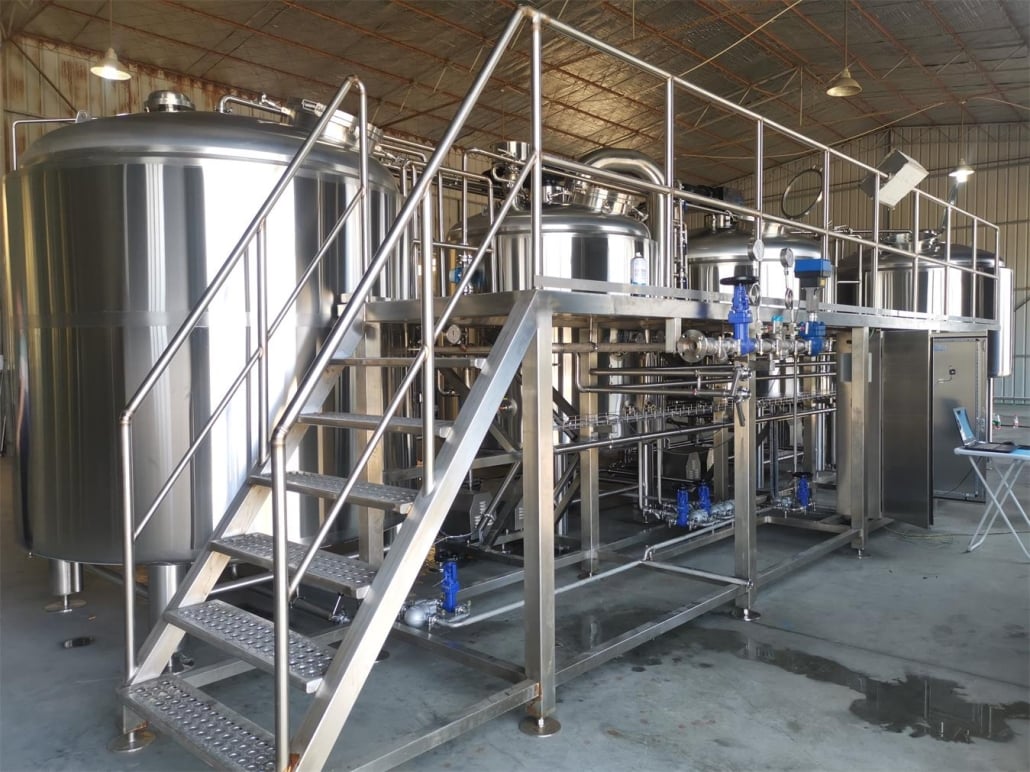
Choosing the Right Machine
The best home beer machine for you depends on your experience level, interests, and budget. Here are some key factors to consider:
- Your Experience Level: If you’re a beginner, a brewing system with automated features and clear instructions might be the best choice. As you gain experience, you can explore more advanced systems that offer greater control over the brewing process.
- Your Interests: Do you enjoy tinkering and customizing your brews? Then a system with manual controls might be more appealing. If you prefer a more hands-off approach, a fully automated system might be a better fit.
- Your Budget: Home beer machines range in price from under $100 for simple dispensing systems to over $2,000 for high-end brewing systems. Determine how much you’re comfortable spending before you start shopping.
Let’s Brew!
Now that you understand the different types of home beer machines, let’s take a step-by-step look at the brewing process using a home brewing system:
- Sanitization: Cleanliness is crucial in brewing to prevent contamination. Thoroughly sanitize all your equipment before you begin.
- Malting and Mashing: This step involves steeping crushed grains in hot water to convert the starches into sugars that yeast can ferment.
- Lautering: The wort (sugar-rich liquid) is separated from the spent grains.
- Boiling: The wort is boiled with hops, adding bitterness, aroma, and acting as a natural preservative.
- Cooling: The wort is rapidly chilled to a temperature suitable for yeast pitching.
- Fermentation: Yeast is added to the cooled wort, and it converts the sugars into alcohol and carbon dioxide. This is where the magic happens, and your beer develops its unique flavor and character.
- Bottling or Kegging: Once fermentation is complete, the beer is bottled or transferred to a keg for carbonation and storage.
- Carbonation: This step adds the fizz to your beer. For bottled beers, this is typically achieved by adding a priming sugar solution before capping the bottles. In kegs, CO2 gas is used to carbonate the beer.
- Conditioning: Allow your beer to condition for a period of time to allow the flavors to mature and mellow.
- Enjoy! Crack open a bottle or pour yourself a glass from your home tap and savor the fruits (or should we say grains?) of your labor!
Considering Space and Design
Home beer machines come in a variety of sizes and styles. Consider the available space in your home when choosing a system. Some systems are countertop-sized, while others are larger and require dedicated floor space.
For dispensing systems, think about where you’d like to place the unit and ensure it will fit comfortably in your designated area.
Suppliers and Price Range
Here’s a table outlining some popular home beer machine suppliers and the typical price range for their products:
| Supplier | Product Type | Price Range (USD) |
|---|---|---|
| Brewer’s Edge | Brewing Systems | $200 – $800 |
| PicoBrew | Brewing Systems | $500 – $1,500 |
| BeerDroid | Brewing Systems | $1,000 – $2,000+ |
| Kegco | Dispensing Systems | $100 – $500 |
| Krups | Dispensing Systems | $200 – $400 |
| Philips | Dispensing Systems | $300 – $500 |
Installation, Operation, and Maintenance
The ease of installation, operation, and maintenance varies depending on the machine you choose. Here’s a general breakdown:
- Installation: Brewing systems typically require more setup than dispensing systems. They may involve assembling components and connecting hoses. Dispensing systems are often plug-and-play, requiring minimal setup.
- Operation: Brewing systems involve following instructions and monitoring the brewing process. Dispensing systems are generally simpler to operate, with controls for temperature and pouring.
- Maintenance: Both brewing systems and dispensing systems require regular cleaning and sanitation to prevent contamination. Brewing systems may require additional maintenance tasks, such as cleaning pumps and filters.
Here’s a table summarizing the factors to consider for installation, operation, and maintenance:
| Factor | Brewing Systems | Dispensing Systems |
|---|---|---|
| Installation | Typically more involved | Simpler, often plug-and-play |
| Operation | Requires following instructions and monitoring the process | Simpler, with controls for temperature and pouring |
| Maintenance | Requires regular cleaning and sanitation, and may involve cleaning pumps and filters | Requires regular cleaning and sanitation |
Choosing the Right Supplier
Finding a reputable supplier is key to a positive home brewing experience. Here are some tips for choosing a supplier:
- Research and Reviews: Read online reviews and research the supplier’s reputation for customer service and product quality.
- Warranty: Consider the warranty offered on the machine. A longer warranty provides peace of mind in case of any malfunctions.
- Customer Support: Look for a supplier that offers responsive customer support in case you have any questions or need assistance.
- Selection: Choose a supplier that offers a variety of machines to suit your needs and budget.
Pros and Cons of Home Beer Machines
Pros:
- Fresh, Craft Beer at Home: Enjoy the satisfaction of brewing your own unique beers, experimenting with different flavors and styles.
- Save Money: Over time, brewing your own beer can be cheaper than continually buying craft beers at the store.
- Fun and Rewarding Hobby: Home brewing is a fun and rewarding hobby that allows you to unleash your creativity and learn about the brewing process.
- Sense of Accomplishment: There’s a great sense of accomplishment in cracking open a bottle (or pouring a glass) of beer that you brewed yourself.
Cons:
- Upfront Cost: The initial investment in a home beer machine can be significant.
- Time Commitment: The brewing process takes time, from steeping the grains to fermentation and conditioning.
- Learning Curve: There is a learning curve involved in home brewing, especially if you’re a beginner.
- Storage Space: Brewing systems and supplies can take up a considerable amount of space in your home.
Making an Informed Decision
By considering the factors outlined above, you can make an informed decision about whether a home beer machine is right for you. If you’re looking for a fun and rewarding hobby that allows you to enjoy fresh, craft beers at home, then home brewing might be the perfect fit.
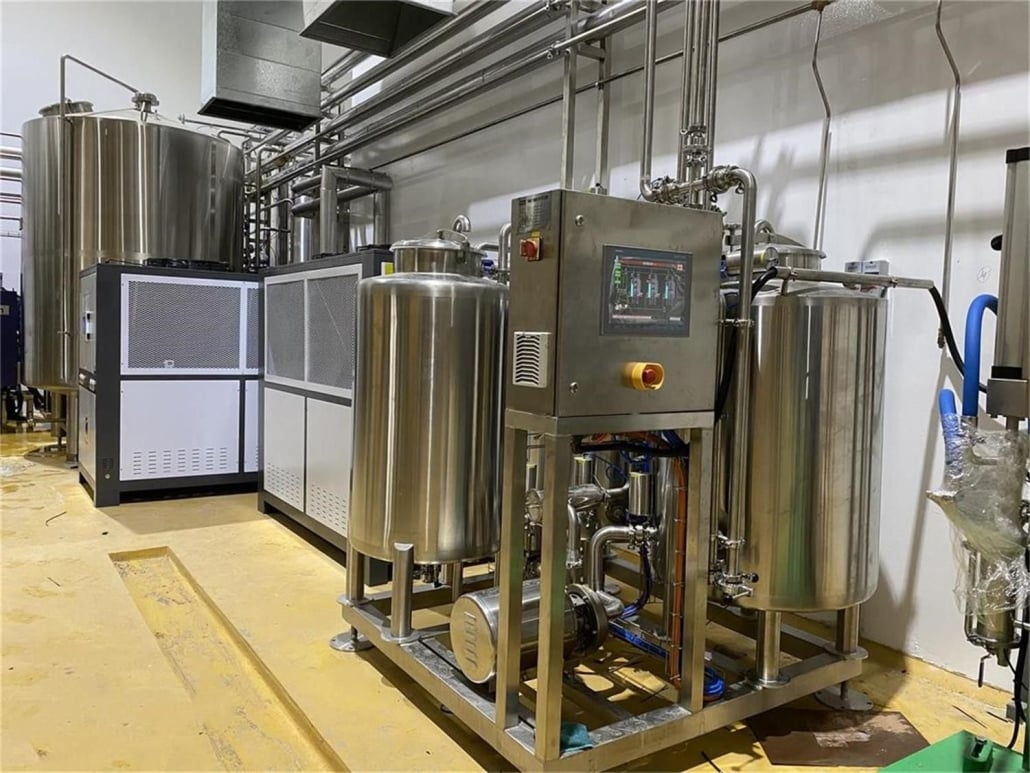
FAQ
Q: How much does it cost to brew a beer at home?
A: The cost of brewing a beer at home can vary depending on the type of beer, the ingredients used, and the efficiency of your brewing process. Generally, it can cost between $0.50 and $2.00 per bottle.
Q: How long does it take to brew a beer at home?
A: The brewing process can take anywhere from a few weeks to a month or more, depending on the style of beer.
Q: Do I need a lot of space to homebrew?
A: The amount of space you need for home brewing will depend on the
A: The amount of space you need for home brewing will depend on the type of machine you choose. Brewing systems can range in size from countertop models to large floor units. Dispense systems tend to be more compact. In addition to the machine itself, you’ll also need space for storing ingredients, bottles, and kegs (if applicable).
Q: Is home brewing difficult?
A: Home brewing can be as easy or difficult as you want it to be. There are beginner-friendly brewing systems with automated features that simplify the process. As you gain experience, you can explore more advanced techniques and experiment with different ingredients and recipes.
Q: Where can I learn more about home brewing?
A: There are many resources available to help you learn more about home brewing. Here are a few suggestions:
- Online home brewing communities and forums: These communities are a great way to connect with other home brewers, ask questions, and get advice.
- Home brewing books and websites: There are many excellent resources available that provide detailed information on the brewing process, recipes, and tips.
- Local home brew shops: Many local home brew shops offer classes and workshops on home brewing.

